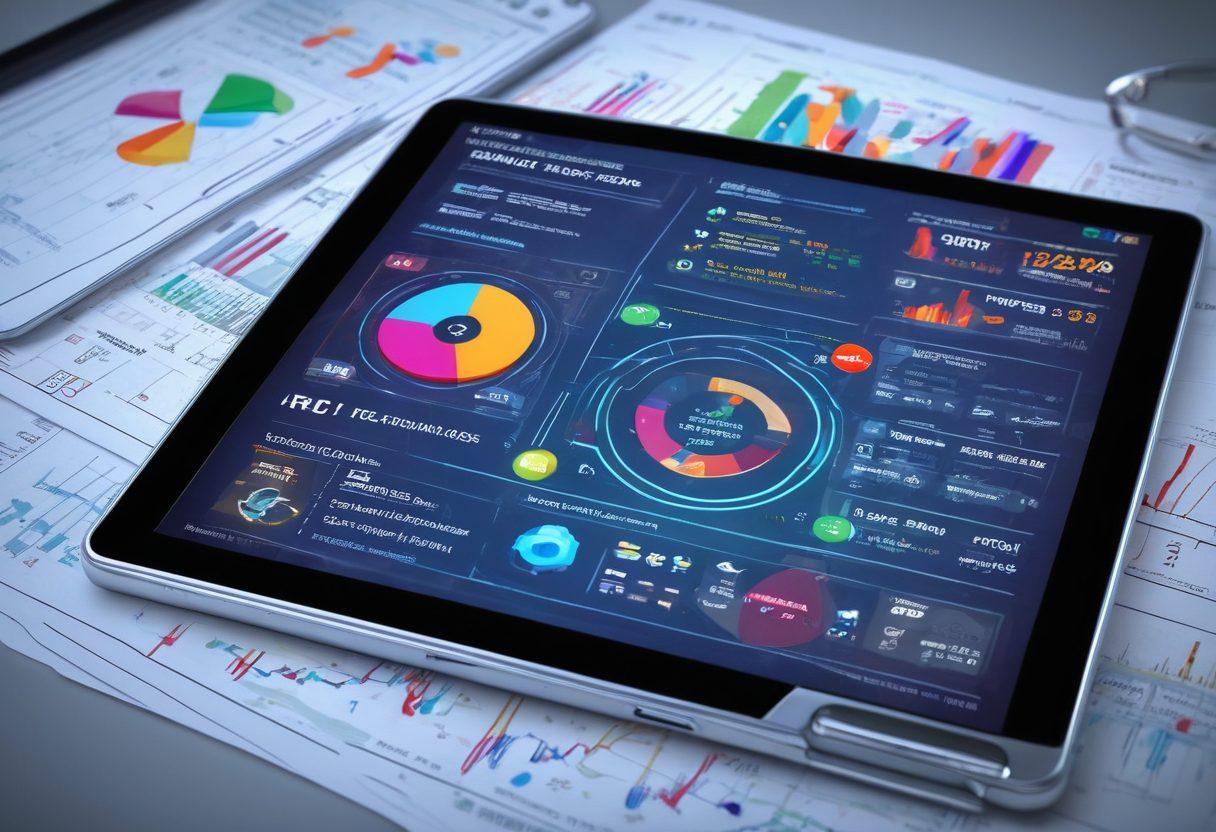Mastering Defense Tracking: Essential Strategies for Effective Risk Assessment and Threat Detection
In a world where risks evolve faster than we can anticipate, mastering the nuances of defense tracking has never been more critical. Imagine a security system that doesn’t just react but anticipates threats before they materialize. This is the essence of defense tracking—a proactive approach aimed at predicting vulnerabilities and neutralizing them before they escalate. From businesses safeguarding sensitive data to governments ensuring national security, the strategies surrounding defense tracking have proven to be triumphant in the ongoing battle against risks and threats.
What if I told you that effective risk assessment relies heavily on something as comprehensive as defection tracing? This technique dives into the heart of movement analysis, allowing organizations to scrutinize actions that may appear harmless at first glance. By understanding behavioral patterns, we empower security monitoring to preempt potential breaches. How well do you know the habits of your digital assets? By using surveillance solutions that specialize in asset tracking, organizations can create a digital fingerprint for each asset, identifying deviations from normal behavior before a minor issue transforms into a major incident.
Let’s dissect the term ‘threat detection’ a bit further. It’s not just about identifying malicious activities but understanding the sophisticated tactics employed by bad actors. Effective defensive strategies begin with robust vulnerability assessment. Think of it as the first line of defense; it uncovers the chinks in your armor by examining everything from outdated software to insecure protocols. With risk assessment at its core, this strategy integrates incident reporting systems that act as your earlest warning signals, allowing a swift response to potential threats.
In our quest for enhanced security, we must also embrace the power of data tracking and intelligence gathering. Have you ever pondered how much information is generated by your organization on a daily basis? Harnessing this data can provide extraordinary insights when employed for forensic tracking. It allows organizations to piece together complex events and identify anomalies in real-time. This can make the difference between merely logging an incident and understanding the underlying patterns that led to it. By focusing on trace analysis, we can navigate through the sea of data, gleaning crucial information that enhances our security posture.
As we thread together these strategies, the goal is clear: to create a fortified environment where threats are mitigated through responsiveness and insight. By capitalizing on monitoring systems that integrate all the aforementioned techniques, organizations position themselves light-years ahead of potential risks. Each layer of defense contributes to a comprehensive approach where the past, present, and future can be monitored. So, ask yourself—are you equipped with the right strategies to safeguard your assets and ensure the safety of your operations?
Transforming Surveillance Solutions: Innovative Techniques for Enhanced Threat Detection
In a world marked by rapid technological advancements and an increase in potential threats, the landscape of security monitoring is evolving dramatically. Surveillance solutions that once relied solely on cameras are now enhanced by innovative techniques that transform how we approach threat detection. Can you imagine a world where your monitoring systems not only observe but also analyze movements and predict potential risks? This is the reality that security professionals are striving to achieve through advanced defense tracking and defection tracing strategies.
At the heart of effective risk assessment is the mastery of asset tracking and forensic tracking. These are not just buzzwords; they are the building blocks of a robust security framework. Think about it: what if your surveillance systems could analyze patterns of movement and provide real-time threat detection alerts? By implementing data tracking techniques and movement analysis, supervisors can arm their teams with vital insights that can prevent incidents before they occur. As the saying goes, "An ounce of prevention is worth a pound of cure."
However, to harness the true power of these innovative techniques, organizations must embrace a culture of continuous learning and adaptation. This means regularly updating monitoring systems to cope with emerging vulnerabilities. How is your organization addressing potential weaknesses? Conducting a thorough vulnerability assessment can uncover blind spots and pave the way for improved defensive strategies. It is about transforming your approach and integrating incident reporting as a necessary part of your operations, making information accessible and actionable.
One compelling approach in this transformation is through intelligence gathering. The combination of trace analysis and surveillance solutions allows security teams to compile a rich set of data that not only tracks movements but also deciphers behavioral patterns. Imagine having a comprehensive picture of every asset and personnel movement, giving teams the confidence to make informed decisions? This level of insight exemplifies the essence of modern risk management and prevention strategies.
As we look to the future of defense tracking, it’s evident that integrated systems will become essential. Organizations that prioritize innovative threat detection techniques will not just keep pace with evolving threats—they will stay steps ahead. What strategies are you thinking about implementing in your surveillance solutions? By investing in the right technology and embracing novel methodologies, you’re not just enhancing security; you're also cultivating a safer environment for everyone involved. After all, in the face of uncertainty, it is our proactive choice to adapt that leads us towards a more secure future.
From Data Tracking to Incident Reporting: A Comprehensive Guide to Mastering Risk Assessment
In today’s rapidly evolving landscape of security threats, mastering defense tracking has never been more critical. Imagine a world where every breach can be anticipated, every movement analyzed, and every vulnerability assessed before it turns into a catastrophe. This is the reality that efficient risk assessment and threat detection aim to create. With the right strategies, organizations can turn data tracking into a robust framework for incident reporting and proactive incident management. Let’s dive deep into the essential strategies that ensure safety is not just an afterthought but a fundamental aspect of operational excellence.
When we talk about defense tracking, it’s all about understanding the flow of information through efficient surveillance solutions and monitoring systems. Think about it – how often do we overlook seemingly trivial data points? A casual glance at movement analysis can reveal patterns that lead to insightful intelligence gathering. For instance, an unusual number of moves in a sensitive area might indicate a potential breach. This isn't solely about asset tracking or finding who's been where; it's about evaluating and establishing defensive strategies that respond dynamically to real-time data.
A fascinating aspect of risk assessment lies in the realm of defection tracing and forensic tracking. Picture this: you notice suspicious behavior within your organization's premises. By employing sophisticated trace analysis techniques, you can investigate backward to identify the root cause of the anomaly. This approach not only helps in understanding the 'what' and 'why' of an incident but also reinforces a strong defense mechanism where the focus shifts from reaction to prevention. You might ask, have we created a culture where everyone feels responsible for security? This question holds the key to fostering an environment where security becomes everyone's priority.
But how do we take these strategies from theory to action? To truly embrace effective threat detection, organizations must develop comprehensive monitoring systems that aren't just reactive but predictive. Begin by conducting regular vulnerability assessments; this identifies weak points within your framework where illicit activities could manifest. Keep communication pathways open – encourage your teams to share their insights when they notice anomalies, no matter how small. The essence of security monitoring lies in collaboration and awareness; after all, the first line of defense is often the keen eye of a vigilant employee.
Finally, let’s not forget the importance of incident reporting as a cornerstone of your security strategy. A robust reporting system ensures that every small incident is documented and analyzed for future learning. What if a minor breach today could help prevent a significant attack tomorrow? By embedding a culture that values transparency, organizations can glean invaluable insights from experiences, refining their processes continuously. Remember, mastering defense tracking isn’t about instilling fear but empowering your team with the knowledge that they are part of a larger safety net, equipped to ward off threats before they take shape.


